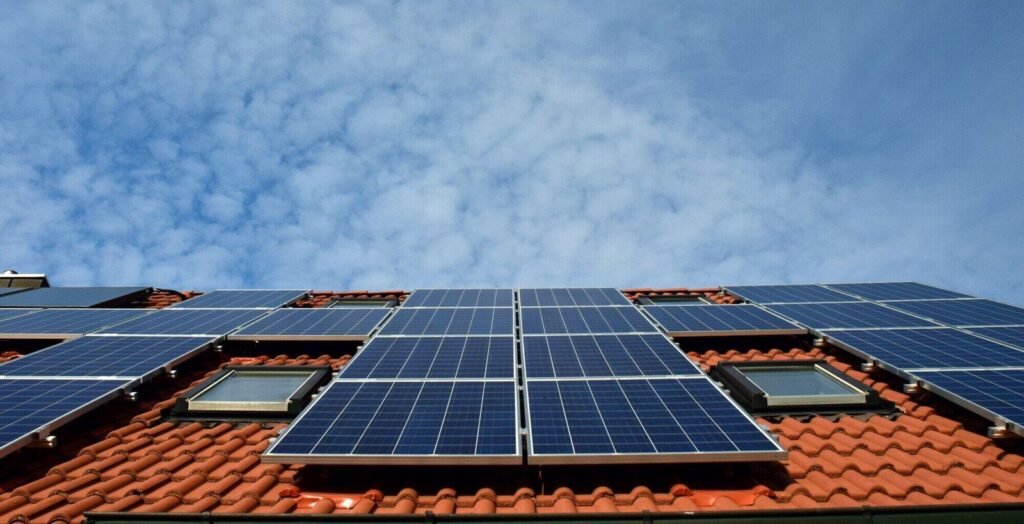Harnessing solar energy on foggy, rainy days may seem challenging. But don’t let the weather fool you. Even on the cloudiest days, your solar panels can still produce energy.
This guide will show you how to get the most out of your system. We will cover tips and maintenance to boost efficiency.
Learn how to keep your solar panels working, despite the foggy rainy conditions. Embrace the power of the sun, no matter the weather.
Stay tuned to discover simple ways to make your solar energy system more reliable and effective.
Install High-Efficiency Panels
Installing high-efficiency panels is key to maximizing your solar energy output. These panels can capture more light and convert it into energy even in low-light conditions. This means they produce more power even when the sun isn’t shining brightly.
High-efficiency panels are designed to work well in all weather. They can help in enhancing solar panel performance in less sunny climates. By choosing these panels, you ensure your system produces energy all year round.
Installing these panels may cost more upfront, but they can save you more over time. High-efficiency panels last longer and often come with better warranties. Investing in them is a smart move for consistent, reliable solar energy.
Clean Your Solar Panels Regularly
Regular cleaning is vital for improving solar performance. Dirt, dust, and debris can block sunlight from reaching the panels. This reduces the energy they produce. Clean your solar panels every few months to keep them free from grime.
A simple way to clean them is using water and a soft brush. Avoid harsh chemicals that might damage the surface of the panels. Gentle cleaning will help maintain their efficiency.
If you cannot do it yourself, hire a professional cleaning service. They use special tools to clean the panels safely. Regular professional cleaning can ensure your solar panels last longer and work better.
Invest in Solar Trackers
Investing in solar trackers can boost your system’s efficiency. Trackers move the panels to follow the sun’s path. This means they capture more sunlight throughout the day.
Solar trackers can boost your system’s efficiency, they help in all types of weather. They make sure your panels get the best angle to the sun. This results in up to 25% more energy compared to fixed panels.
There are different types of trackers to consider. Single-axis trackers follow the sun from east to west. Dual-axis trackers follow the sun in all directions for maximum energy capture.
Timely Maintenance and Repairs
Timely maintenance and repairs are crucial for keeping your solar panels efficient. Any damaged or malfunctioning parts should be repaired or replaced promptly. This is to prevent further decline in performance.
Check your panels for any wear or damage. Cracks or faulty wires can reduce their performance. Fixing these issues quickly helps maintain your energy output.
Solar panel maintenance also includes inspecting the inverter and other components. Make sure everything is working smoothly. By staying on top of repairs, you ensure your system runs efficiently all year round.
Use Micro-Inverters Instead of Central Inverters
Using micro-inverters instead of central inverters can improve your solar energy system. Micro-inverters are placed on each solar panel. This allows them to work better, even in cloudy weather.
Micro-inverters convert energy from each panel separately. If one panel is shaded, the others still work at full power. This boosts the total energy you get from your system.
Micro-inverters are also easier to install and maintain. If there is a problem, you can fix just one panel. This makes your solar energy system more reliable and efficient overall.
Add a Battery Storage System
A battery storage system helps you save the energy your solar panels make. Instead of only using energy when the sun shines, you can store it for later. This is great for rainy or foggy days when energy production is low.
Having a battery storage system makes your solar setup more reliable. You won’t need to depend on the power grid as much. This means you can still use solar energy even during power outages.
Battery storage systems come in different sizes to fit your needs. They are helpful for homes with high energy use. Adding one can help you make the most of your solar energy system.
Consider Solar Panel Coatings
Solar panel coatings can also boost your system’s efficiency. These coatings help panels capture more light by reducing reflection. They can be a simple, cost-effective way to enhance your solar setup.
Coatings protect your panels from dust, dirt, and water. This keeps them cleaner for longer and reduces the need for frequent cleaning. A cleaner panel converts more sunlight into energy, increasing your power output.
Applying a solar panel coating is easy and can be done by professionals. It helps extend the life of your panels by protecting them from wear and tear. Consider adding coatings to maximize your solar energy production.
Optimize Panel Placement
The position of your solar panels greatly influences their efficiency in converting sunlight into electricity. Panels installed at an optimal angle can capture more light even during poor weather conditions like rain or fog. Therefore, proper installation maximizes overall productivity.
South-facing roofs are usually best for solar panels. This direction gets the most sun all day long. Additionally, adjusting the tilt angle seasonally can help optimize energy capture throughout the year.
Re-evaluate your placement if you add more panels. Make sure the new panels don’t shade others. Proper placement ensures every panel works efficiently, giving you maximum energy output.
Implement Energy-Efficient Practices
Reducing overall energy consumption can help mitigate the impact of reduced solar output on cloudy days. Implementing energy-efficient appliances, lighting, and practices in your home can lower your energy demands. This makes your solar system more effective in providing for your needs, even with less sunlight. This not only maximizes the use of solar energy but also helps to reduce your carbon footprint.
Harnessing Solar Power on Foggy Rainy Days
Optimizing your solar power system ensures efficiency, even on foggy rainy days. By investing in high-efficiency panels, regular maintenance, and additional technologies like micro-inverters and battery storage, you can maximize energy output regardless of weather conditions.
Proper placement and protective coatings also play crucial roles in sustaining performance. Embrace these strategies to harness the full potential of solar energy, and enjoy reliable, sustainable power throughout the year, no matter how cloudy the skies may be.
Stay informed and maximize your solar power! Discover more expert tips and advice on our blog for optimal energy efficiency. Read now!







